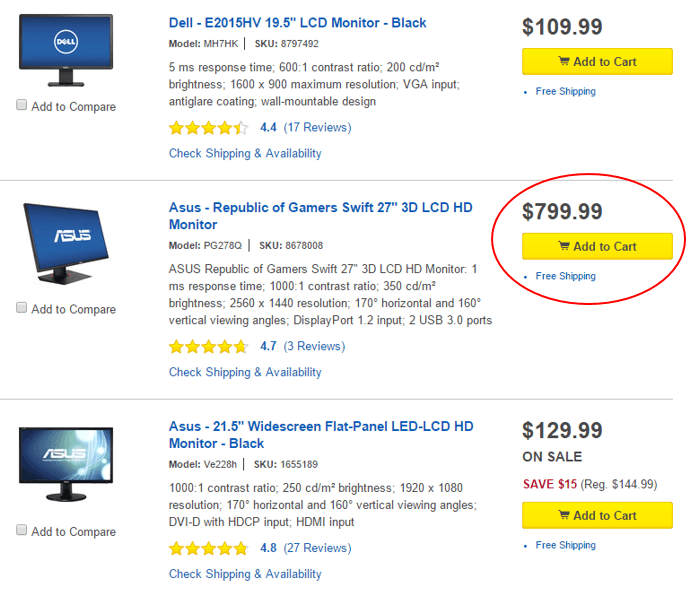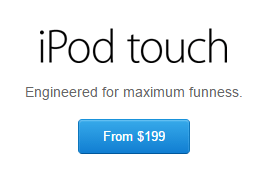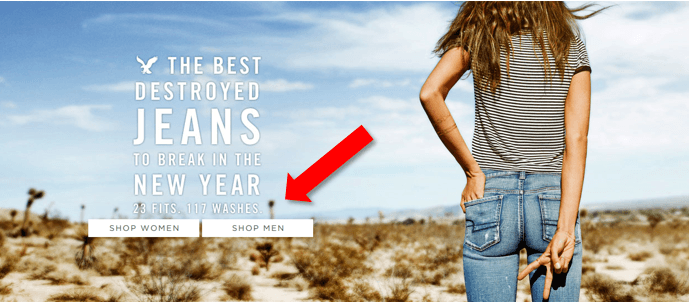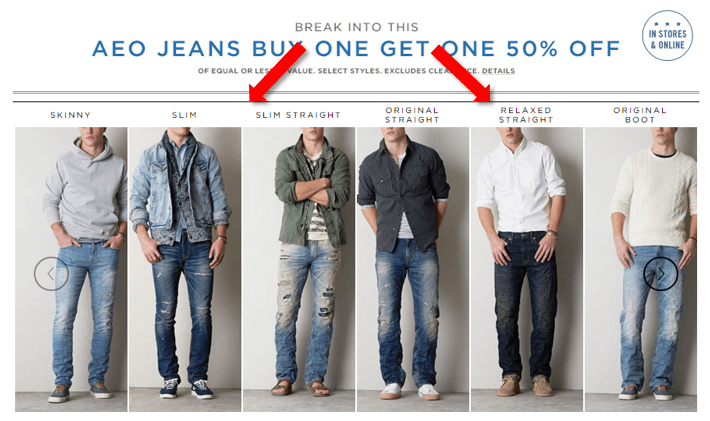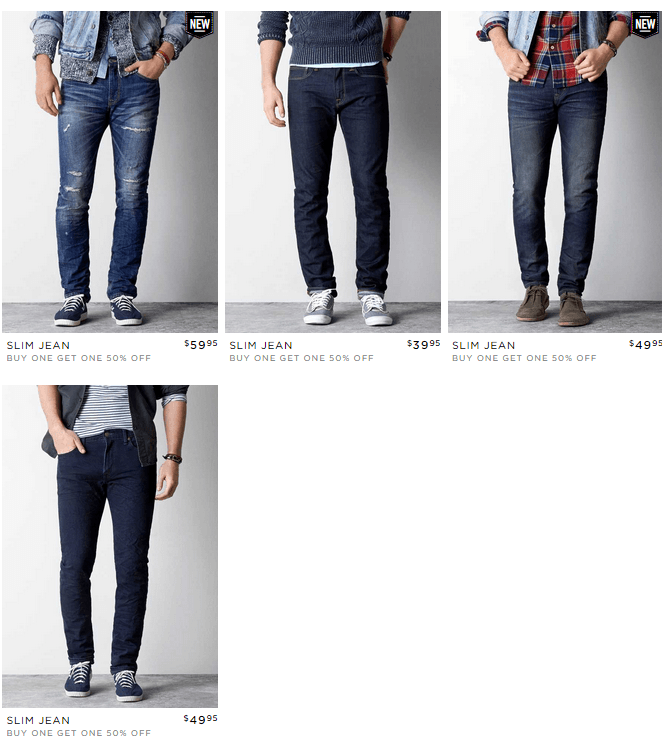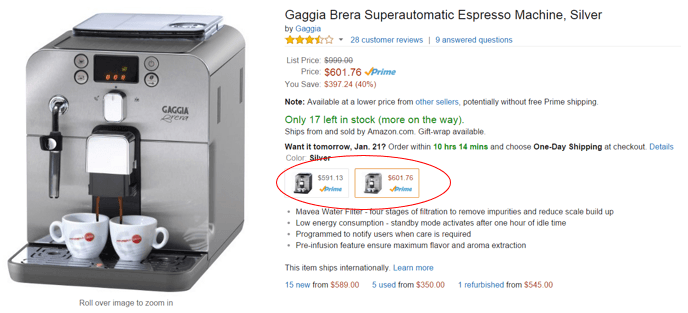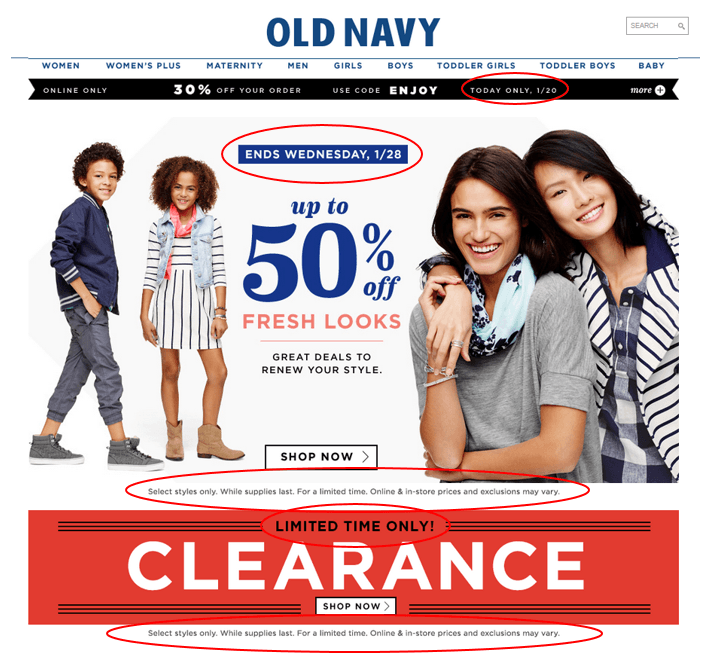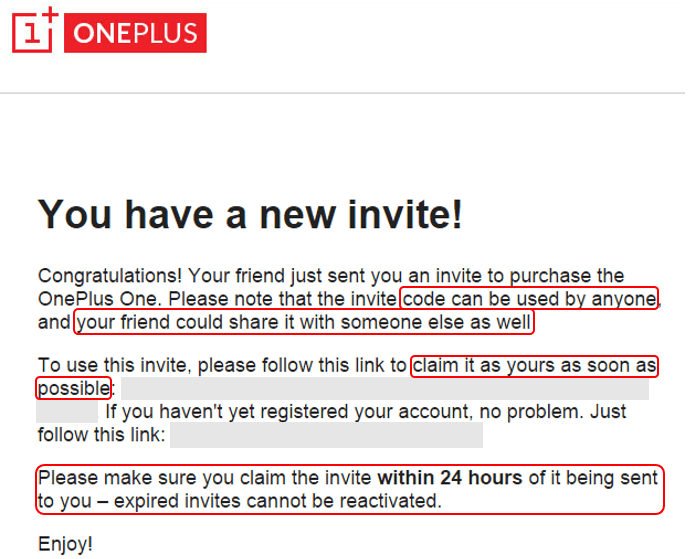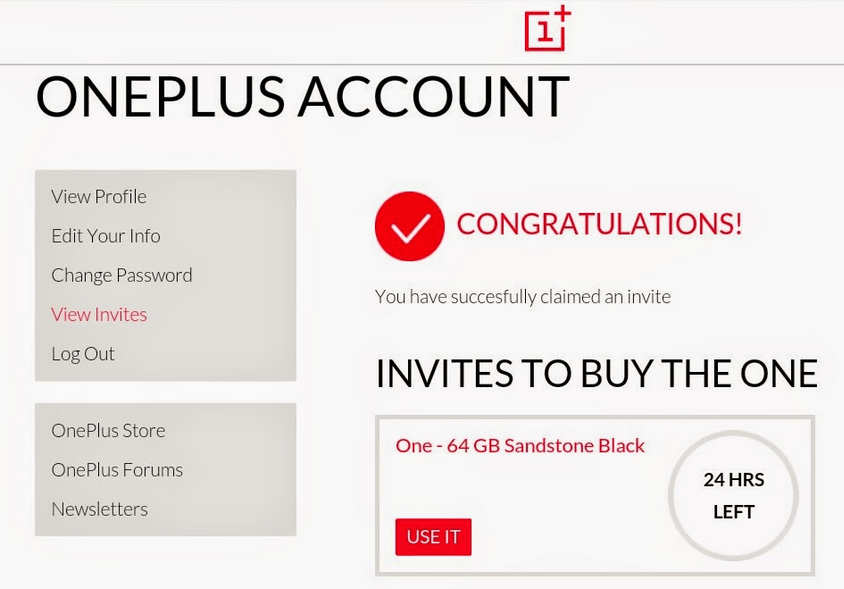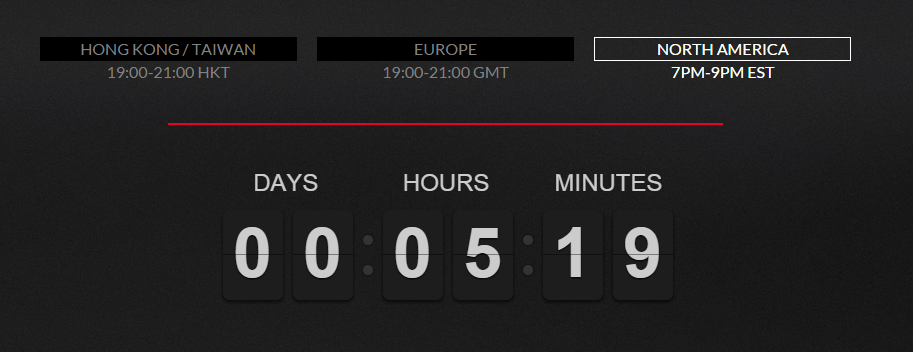Looking for a new way to boost your sales? Before going into your marketing platforms, have you considered looking into the psychology of sales?
As you know, our minds work in weird ways, and lead us to do things that may not be 100% rational.
Why is that good news for you as an eCommerce store owner?
I’ll tell you why, because by doing a bit of research you will find that the field of psychology has explained many of these discrepancies between logic and action. Based on those explanations, you can actually use psychology to manipulate (encourage, if you’re looking for a nicer term) your customers to make purchases.
All that you need to do is make a few changes to your website and the sales will roll in.
So, do you want to boost your sales?
Of course you do!
In this post, you will learn a few psychological triggers that you can use to increase your sales.
Psychological Trigger #1: The Left-Digit Effect
Have you ever looked at a price, saw it said $9.99, and interpreted it as $9? If so, then you are not alone.
The reason you do that is because humans naturally attribute the most weight to the left most value in a number, presumably because it is the first one that they read, and it is the largest aspect of the number as a whole. People therefore will categorize an entire number based on the first number that they read.
This phenomenon is called the left-digit effect.
How can you utilize this effect to boost sales at your eCommerce store?
Simple. All you have to do is look at your current pricing, and think about where you can change the pricing from a whole number (like 10) to a “99” number (9.99).
This change will make your customers view your products as cheaper, and can definitely help boost sales on individual products.
Best Buy does this with its pricing:
I’d be willing to bet that if the second monitor was sold for $800 rather than $799.99 it would sell much less.
There’s more you can do with the left digit effect.
If you’re considering raising your prices, and you currently sell a t-shirt for $12, you can easily raise its price to $12.99, and due to this effect, the price will be perceived as similarly to the way it was before the raise. Obviously there will be those who notice the change, but on quick glance these two prices will be processed by people similarly.
Another way to apply this effect is when promoting a sale.
Let’s say you’re offering discounts that are between 15% and 40%, rather than advertising “Sale! Between 15%-40% off!” you should advertise, “Up to 40% off.”
Why? Because of the same idea. If you give the range then people will automatically look at the first number and attribute less weight to the second number – the larger one. That would take a lot of the excitement out of your sale.
Which sounds better, a 15% discount or a 40% discount? Obviously the 40% discount. You don’t want to lose out on that excitement. By using the “up to” wording you will generate more excitement around your sale, and increase the number of people visiting your site.
For example, Apple uses this on their product landing pages by mentioning only the lowest price in the price range, rather than the whole price range.
(For more on the left-digit effect read this article)
Psychological Trigger #2: Choice Overload
When you go to a restaurant what do you prefer to see on your menu – a lot of different options, or a few options? Right now you’re probably saying to yourself “Of course I want a lot of options.” That makes sense, you want the freedom to choose the type of food that suits your mood or taste.
But what happens when you actually get to the restaurant, and you’re given a menu with 100 different options? I don’t know about you, but I get paralyzed by the vast amount of choices. There are so many choices that I don’t even know what I want anymore.
This phenomenon is called choice overload.
How does this apply to your eCommerce store?
Let’s say you sell clothing, and you have 500 different products that you sell. Obviously the first thing you will do is create a menu for your site visitors to choose between men’s, women’s, kid’s, etc. which will divide the options down for them, but there is still more that you could do.
Again, even 50 options is a lot. So you want to make the narrowing down process as simple and streamlined as possible. Here’s what you can do:
- Step 1: Take a look through your products and determine which of them are essential, and which are similar to other products, or were just added on at a whim. Remove the unnecessary products in order to slim down the number of choices available.
- Step 2: Categorize your products not just by the main category, but also by sub-categories, so as to bundle your products into categories as much as possible.
- Step 3: Use these categories as your way to guide your customers to the exact products that they want, and encourage step-by-step conversions by minimizing the choices at each step.
- Step 4: Think about which products are your best – most profitable, most popular, etc. and choose those to feature on your homepage.
American Eagle does a fantastic job of this. On their homepage they feature a “landing page” for jeans, with only two options offered, “Men” or “Women” – an easy choice.
The next page that you are taken to after clicking on that once again is a landing page that only offers a limited number of options. Here you are given six options for different fits of jeans – again, a fairly easy decision.
Finally, after having clicked on the fit of jeans that you want, you are taken to the part of the page with the exact type of jeans that you are looking for. Here there are only four options. It’s much easier for a person to choose from four pairs of jeans than from 46 pairs (the total amount of jeans that AE offers).
This example clearly shows how this process of categorizing your products and creating a set of mini-landing pages can guide your customers along towards making a purchase by simplifying the choice at each stage. You should utilize this method in order to defeat the overload of choice effect.
(For more on choice overload read this article).
Psychological Trigger #3: Anchoring
Let’s say you want a new IPod. You will head over to Apple’s website to take a look at the latest IPod touch, and you will find your way to this page:
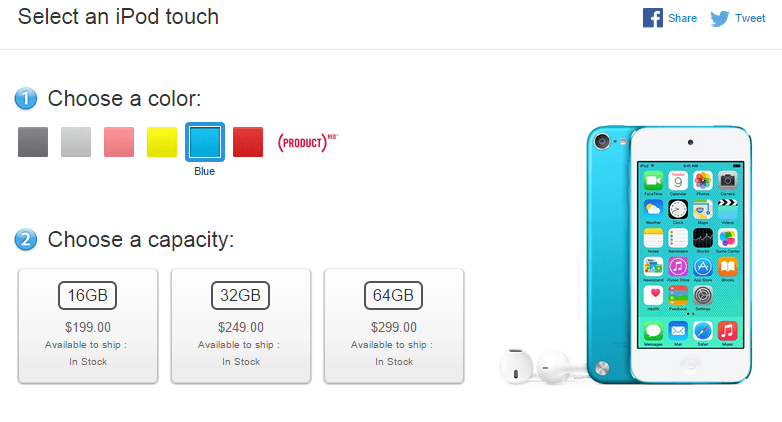
What happened here? You went to buy something for $250, and all of a sudden you purchased something for $300.
This can be explained with the phenomenon of anchoring.
Essentially what happened in this situation is that the lower price acted as an anchor for the higher price. Your decision wasn’t to spend $300 or $0. It was to spend an extra $50 or not, since your base price was already $250. You anchor your expectations for cost based on what you already have in front of you.
If, on the other hand, Apple only offered options of $200 or $300, you would be far less likely to select the more expensive option, because this price jump is much more significant.
It’s simple to see how this can help you increase sales in your eCommerce store.
All you have to do is think of logical product pairings and upgrades so that you can take advantage of the lower price as an anchor for a higher priced product.
Amazon’s pricing scheme is a classic example of this. Just about every product on Amazon comes with a few different price levels.
You can separate your product price levels by color, fit (for clothes), added features, or anything else that you can think of. What you can be sure of is that by bundling your more expensive products with cheaper versions you can play off of the effect of anchoring to boost your sales.
(For more on anchoring read this article).
Psychological Trigger #4: Urgency and Scarcity
Was there ever a concert that you really really wanted to go to? If so, then I’m sure you also recall that you were willing to pay ridiculous amounts of money in order to be sure that you would get what you wanted.
Why were you willing to do that? Obviously part of it is because of the perceived benefit you would get from the concert. But why did you need to buy tickets the day they became available, and pay more than you should have?
I’ll tell you why – the phenomenon of urgency.
You were nervous that you wouldn’t get what you wanted due to the limited supply, and that forced you into action.
Sure, you’re products are probably not as emotional as a concert, but you too can utilize urgency and scarcity in your eCommerce store.
There are a few great ways you can do this.
- Show that you have a limited number of products in order to create a sense of scarcity. This will encourage people to act out of fear that your product won’t be available next time they visit your site.
- Make offers available for a limited time only! When you do this, be sure to stress words like “limited time, “Today only,” “Offer ends today,” you get the idea. Make sure it’s obvious that TODAY is the day to take action, not later.
You can remind people on your home page, product pages, or anywhere else that you can think of.
Trust me, people won’t mind you advertising your sales to them on your own site. Just take a look at how many times Old Navy uses urgency and scarcity on its homepage.
If you need another example of this, then look no further than the upstart smart phone company OnePlus and its phone, the One. OnePlus has built its entire marketing scheme around the concepts of urgency and scarcity.
Due to insufficient inventory it is impossible to purchase a OnePlus One without an invite from another person who has already purchased the phone. This invite scheme creates a sense of scarcity about the phone. It’s rare, so you want to get your hands on it.
If you were to actually obtain an invite for the OnePlus One you would then receive this email:
Take a look at the parts of this email that are circled in red. All of them are things that create a sense of urgency.
After claiming the invite and setting up your account you would be taken to this landing page:
Notice how even after claiming the invite OnePlus continues to push the urgency by including a countdown clock on the buy now page.
But OnePlus did not leave it at that. No, they cranked it up a notch. On January 20th OnePlus offered the option to buy the One without an invite. The catch — it could only be bought on January 20th and only during a two hour window. Of course there was a big countdown clock on their website leading up to this grand event:
This marketing strategy has worked tremendously for OnePlus. Between the urgency that they push and the scarcity that they created, the One is one of the most desired phones on the market, and even with the invite system in place, almost 1 million One’s were sold during 2014. That’s pretty impressive for a startup’s first product, and just shows that the urgency really does push sales.
(Obviously the One is also an excellent phone, which is also part of the marketing scheme, but the fact that it is good and scarce, just makes it even more enticing.)
Think about how you can create a sense of urgency for your customers, and you will be able to give them the shock they need to get up and act!
One thing you have to remember though is to make sure it is easy for your customers to act once you have encouraged them to do so. You can do this by using clear call to actions with strong language. Notice how OId Navy placed a “Shop Now” call to action after each and every “urgency line.”
Psychological Trigger #5: Reciprocity
Picture this, you’re looking to buy a new computer. You go to the local electronics store and see a Mac computer and think, “Wow I’d love to have that computer!”
The problem is it’s a bit too expensive. That’s when the salesman comes over to you and tells you that if you buy a Mac you will get a $50 gift certificate for iTunes. Suddenly, you feel compelled to buy the computer since you’re getting something extra.
This is the phenomenon of Reciprocity.
When people get something “for free” they feel more inclined to make the purchase that goes along with the free item.
You can use just about anything as your freebie, and it will help your sales.
One of the most common methods is offering free shipping. In my opinion though, a more effective version of this method is offering free shipping for purchases over a certain dollar value.
The reason this is so effective is that it utilizes TWO psychological sales techniques at once.
- First, obviously it uses reciprocity to encourage people to purchase, but it actually also uses anchoring in a sense. Someone might go onto Target’s website with the idea of purchasing something for $30, but then they see that if they spend $50 they will get free shipping. This now becomes the base price that they think about, so rather than spending $30, they will be more inclined to spend at least $50.
- Another thing you could do is offer some accessories with the purchase of a certain product. For example, if you were to offer a free phone case with the purchase of a phone, then you would be using reciprocity to encourage people to buy your phones.
By utilizing the effect of reciprocity, you can not only increase the quantity of your sales, but you can actually increase the price of your sales, because people will be more inclined to buy something when they get something for free in return, even if they have to pay more to get it in the first place!
Start Using the Psychology of Sales to Grow your Business!
Now that you’ve had your introduction to the psychology of sales, it’s time to start putting these new methods to use!
Do you have any psychological methods that you use in your business? We’d love to hear from you in the comments below with any questions, stories, or comments that you have!

Zack is a social media enthusiast who loves all things digital. He is the inbound marketing manager at StoreYa where he spends his days searching for the newest social marketing scoop. If you’d like to chat with him, feel free to connect with him on any social platform.
Recommended articles
 Facebook Ads for eCommerce: 16 Strategies, Examples & Tips
Facebook Ads for eCommerce: 16 Strategies, Examples & Tips
 How to Build a Winning eCommerce Ads Strategy
How to Build a Winning eCommerce Ads Strategy
 Google Ads for eCommerce: Everything You Need to Know
Google Ads for eCommerce: Everything You Need to Know
 10X Your Traffic with PPC Management Software
10X Your Traffic with PPC Management Software
Comments
Powered by Facebook Comments
